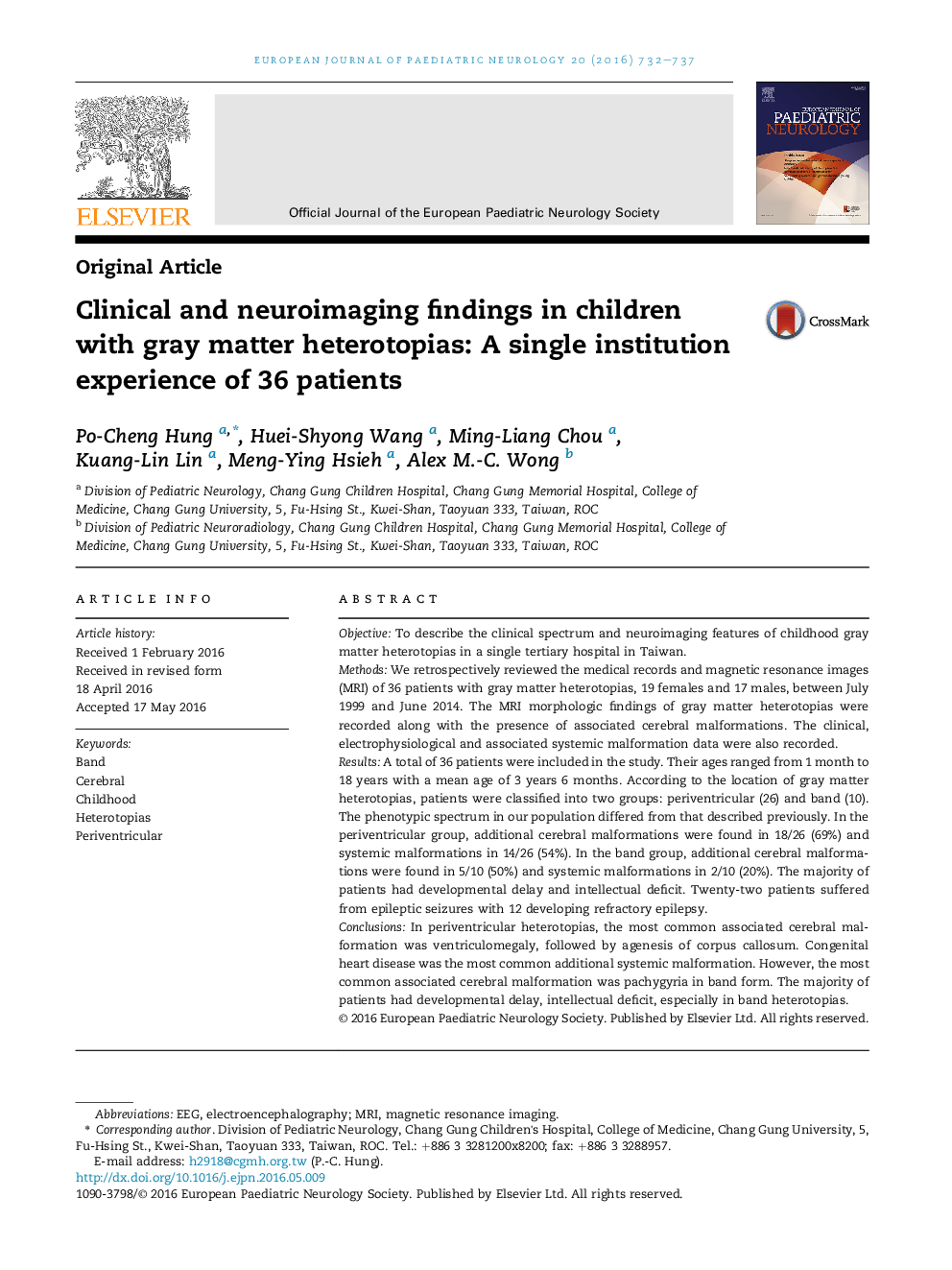| کد مقاله | کد نشریه | سال انتشار | مقاله انگلیسی | نسخه تمام متن |
|---|---|---|---|---|
| 3053473 | 1580005 | 2016 | 6 صفحه PDF | دانلود رایگان |
• The majority of patients had developmental delay and intellectual deficit.
• The commonest associated cerebral malformation in periventricular form was ventriculomegaly.
• Congenital heart disease was the commonest additional systemic malformation in periventricular form.
• The most common associated cerebral malformation was pachygyria in band form.
• Frontal horns were the most common location in periventricular heterotopias.
ObjectiveTo describe the clinical spectrum and neuroimaging features of childhood gray matter heterotopias in a single tertiary hospital in Taiwan.MethodsWe retrospectively reviewed the medical records and magnetic resonance images (MRI) of 36 patients with gray matter heterotopias, 19 females and 17 males, between July 1999 and June 2014. The MRI morphologic findings of gray matter heterotopias were recorded along with the presence of associated cerebral malformations. The clinical, electrophysiological and associated systemic malformation data were also recorded.ResultsA total of 36 patients were included in the study. Their ages ranged from 1 month to 18 years with a mean age of 3 years 6 months. According to the location of gray matter heterotopias, patients were classified into two groups: periventricular (26) and band (10). The phenotypic spectrum in our population differed from that described previously. In the periventricular group, additional cerebral malformations were found in 18/26 (69%) and systemic malformations in 14/26 (54%). In the band group, additional cerebral malformations were found in 5/10 (50%) and systemic malformations in 2/10 (20%). The majority of patients had developmental delay and intellectual deficit. Twenty-two patients suffered from epileptic seizures with 12 developing refractory epilepsy.ConclusionsIn periventricular heterotopias, the most common associated cerebral malformation was ventriculomegaly, followed by agenesis of corpus callosum. Congenital heart disease was the most common additional systemic malformation. However, the most common associated cerebral malformation was pachygyria in band form. The majority of patients had developmental delay, intellectual deficit, especially in band heterotopias.
Journal: European Journal of Paediatric Neurology - Volume 20, Issue 5, September 2016, Pages 732–737
